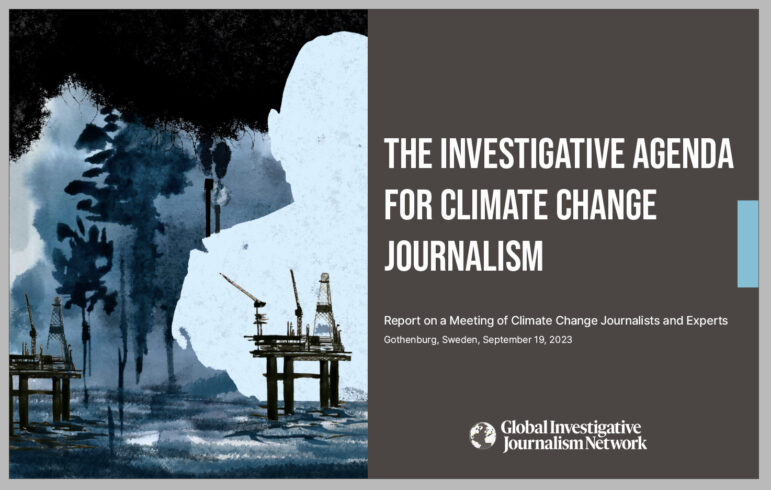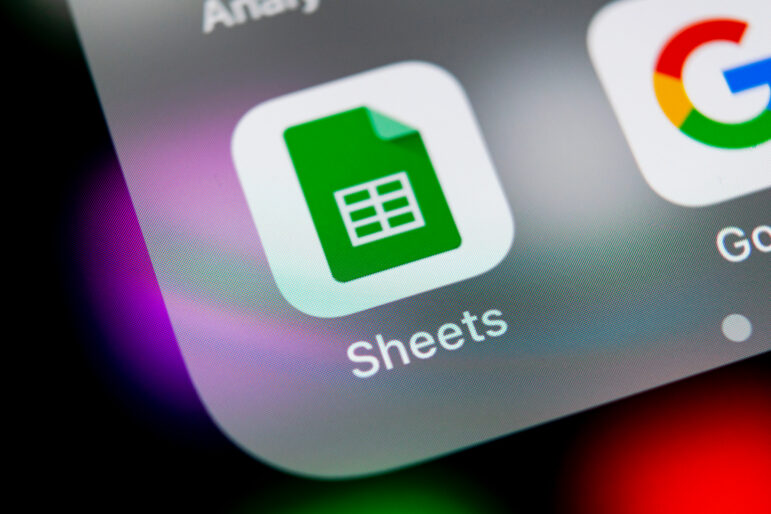

Image: GIJN
GIJN Resource Center’s Top Guides and Tipsheets from 2024
Read this article in
The past 12 months have been a busy year for GIJN’s Resource Center. With eight new and updated guides, the Resource Center is here to help journalists expand their knowledge and skills. The Center holds more than 2,000 items in 14 languages — from tipsheets and guides to instructional videos. Here are our top selections for this year.
Guide: Introduction to Investigative Journalism
While there is plenty of online training about advanced research techniques, we recognized a significant need for basic investigative journalism skills. That’s why we put together this guide written by some of the world’s top investigative journalists. This 10-chapter guide covers topics including: Following the Money, Finding Sources, Interviewing Techniques, Open Source Research, Data Journalism, Fact-checking, Collaboration, and Editing.
We hope this guide is used by both university professors, journalism students, and beat reporters, who are interested in learning more about investigative journalism.
Guide to Project Management in Investigative Journalism
International collaborations are here to stay. By joining forces, journalists can extend their reach and ensure that important stories get the global attention they deserve. However, organizing these collaborative projects comes with its own challenges. While there are numerous playbooks, articles, and books on how to conduct collaborative journalism from an investigative journalist’s perspective, there is a lack of guidance on how to manage the non-investigative aspects of these collaborations. Who is responsible for overseeing what tasks, and what exactly does that role entail? This comprehensive guide authored by Coco Gubbels, organized into seven chapters, also includes tips and tools, extra reading material, templates, and other links for more information.
Introduction to Fundraising for Investigative Journalism
If you’re new to fundraising, start your search from here. Finding funding for your journalism organization can be a daunting responsibility — especially if your organization does not have someone experienced in working with donors. How much can you expect to invest? One estimate is that you can expect to spend $25,000 in fundraising costs for every $100,000 you need to raise; that’s why nonprofit newsrooms can’t ignore fundraising for too long. Written by GIJN Development Director Karen Martin.
Updated Guide: Covering the Extractive Industries
Extracting natural resources — oil and gas, coal, low-value minerals such as sand, and high-value minerals such as gold — has benefits and costs. Mineral extraction plays a dominant role in many economies and in the lives of billions of people. Additionally, minerals needed for the green energy transition, such as cobalt, nickel, and lithium, are in high demand, bringing new attention to the corresponding environmental, social, and governance risks of mining them. This short guide helps journalists identify stories connected with the financial, environmental, and human rights aspects of the industry.
Investigating Carbon Offsets

Carbon credits are often promoted as a way for individuals to offset the climate impact of their commercial air travel. Image: Shutterstock
Oversight by journalists is essential and has already had a major impact. It’s an important, though not easy, assignment. But there are many stories to be done worldwide, from the local level to the corporate boardroom. In 2024, we published an abridged version of our Investigating Carbon Offsets guide, authored by GIJN Resource Center Senior Advisor Toby McIntosh.
Carbon offsetting occurs when a project that reduces greenhouse gas emissions is turned into a saleable commodity: “carbon credits.” These credits may be used by the purchaser to “offset” their own emissions. During the past few years, the voluntary market of these carbon credits has grown rapidly but also raised numerous questions about the credibility of some of the underlying projects. This voluntary marketplace operates virtually without regulation and with limited transparency.
Guide to Investigating Extreme Heat

Firefighters from multiple task forces respond to a bushfire in Cessnock, New South Wales, Australia. Photo: Quarrie Photography / Flickr Creative Commons
Continuing our tradition with climate guides, this one, also written by GIJN’s Toby McIntosh suggests multiple angles for investigating extreme heat as a global phenomenon. The scale of global warming and its consequences are huge. According to a report by Climate Central, a US non-governmental organization, “6.8 billion people — 78% of the world’s population — experienced at least 31 days of extreme heat” in the 12 months ending in May 2024. And heat waves are expected to claim approximately 1.6 million lives by 2050, according to a January 2024 World Economic Forum report, which also estimated that droughts will cause 3.2 million deaths by 2050. All these factors make investigating extreme heat a crucial topic.
Step-By-Step Guide for Journalists on the Basics of Google Sheets

Image: GIJN
Knowing how to use spreadsheets is a crucial skill, as it allows you to find potential stories in large amounts of data. This is a very basic guide that will help you dig through vast datasets that may be coming from a leak or freedom of information request. It also offers the dual advantages of facilitating data cleaning and visualization while ensuring a reader-friendly presentation of information.
 Nikolia Apostolou is GIJN’s Resource Center director. She has been writing and producing documentaries from Greece, Cyprus, and Turkey for more than 18 years, working with more than 100 media outlets, like the BBC, The Associated Press, AJ+, The New York Times, The New Humanitarian, PBS, USA Today, Deutsche Welle, Al-Jazeera, and many others. She covered extensively Greece’s economic crisis that started in 2010 and the European migrant crisis. Her documentaries have been screened in festivals across the world and have won multiple awards in various competitions. Nikolia earned her Master’s Degree in Digital Media at the Columbia University Graduate School of Journalism and her Bachelor’s Degree at Panteion University, in Athens, Greece, majoring in journalism.
Nikolia Apostolou is GIJN’s Resource Center director. She has been writing and producing documentaries from Greece, Cyprus, and Turkey for more than 18 years, working with more than 100 media outlets, like the BBC, The Associated Press, AJ+, The New York Times, The New Humanitarian, PBS, USA Today, Deutsche Welle, Al-Jazeera, and many others. She covered extensively Greece’s economic crisis that started in 2010 and the European migrant crisis. Her documentaries have been screened in festivals across the world and have won multiple awards in various competitions. Nikolia earned her Master’s Degree in Digital Media at the Columbia University Graduate School of Journalism and her Bachelor’s Degree at Panteion University, in Athens, Greece, majoring in journalism.








